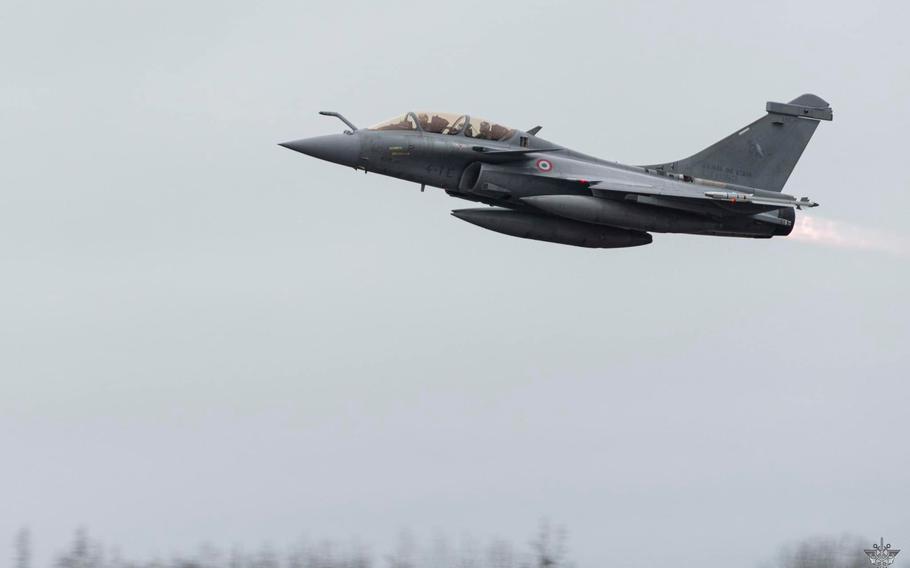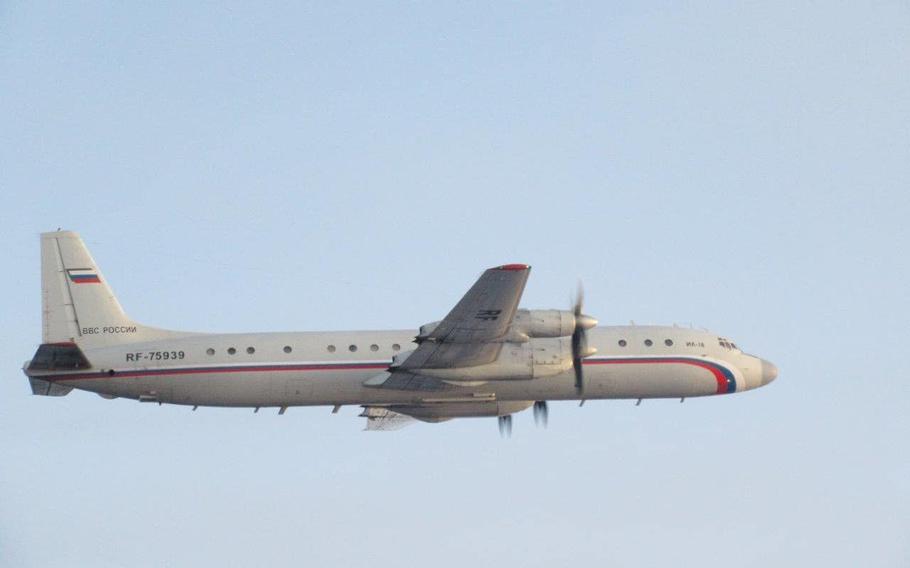
A French Rafale jet takes off from Siauliai, Lithuania. French jets with NATO's Baltic air policing mission intercepted a Russian Ilyushin Il-18 on Dec. 13, 2024, according to the French military. It was one of several similar incidents in the past week over the Baltic Sea, allied defense officials said. (Facebook/French armed forces)
STUTTGART, Germany — NATO fighters scrambled seven times during the past week to track down Russian military aircraft violating international aviation regulations over the Baltic Sea, allied defense officials said.
The most recent incident occurred Sunday when NATO planes intercepted a Russian AN-72 transport aircraft, which was flying from the Russian mainland to its military exclave of Kaliningrad, the Lithuanian Defense Ministry reported Monday.
The Russian aircraft, like several other intercepts over a six-day span, was flying with its transponder switched off, making it invisible to commercial radar, the ministry said in a statement.
The flurry of intercepts over the Baltic Sea comes amid heightened tensions in that region.
In recent weeks, undersea communication cables in the Baltics have been severed, prompting investigations by authorities in Sweden and elsewhere. Also, allies have accused Russia of disrupting sea navigation systems used by commercial vessels on the Baltic Sea, a tactic possibly aimed at concealing Russian maritime movements.
“We are talking about aggressive behavior by Russia. They are trying to disrupt our lives,” Vice Adm. Krzysztof Jaworski, commander of Poland’s Naval Operations Center, told Reuters in an interview published Monday. “They are also testing us … as an alliance (to see) how far they can go.”

A Russian Ilyushin Il-18 plane was intercepted by French Rafale jets off the coast of Estonia, Dec. 13, 2024, according to the French military. It was one of several similar incidents in the past week over the Baltic Sea, allied defense officials said. (Facebook/French armed forces)
In the air, Russian pilots frequently cross the Baltic Sea without flight plans and have a history of not transmitting a transponder code indicating their position, which NATO says creates safety hazards for civilian air traffic control.
In Europe, encounters between allied and Russian aircraft are relatively commonplace. Intercepts occur often without incident.
However, close encounters have risked potential escalation between Russia and the U.S. military, such as when a Russian fighter in March 2023 collided with a U.S. drone over the Black Sea, sending the unmanned aircraft crashing into international waters.
While most encounters happen in international air space, there have been instances of Russian jets crossing into alliance territory. In June, Finland said four Russian military aircraft spent several minutes inside its airspace.